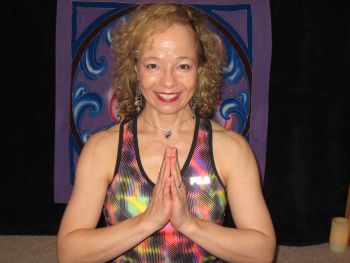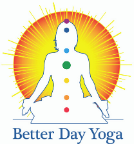
Mudra means “seal” in Sanskrit. It’s a symbolic or ritual gesture using primarily the hands. Each position is believed to have a specific effect. Specific positions can lead to specific states of consciousness symbolized by the hand positions. For example, if a person frequently and with feeling does a position of fearlessness, they will also be freed from fearfulness in time. Mudras are said to engage areas of the brain and/or soul influencing them, sometimes physically, by their use—not unlike an affirmation, or reflexology for that matter.
“One way that all of us can better care for ourselves is by developing techniques for coping with the irritations and anxiety that are part of life…
Think of these gestures as self-talk for your hands. These simple movements, the gestures that we often make unconsciously, can help us focus on our work, calm ourselves, release anger and energize us. Used for centuries by many different cultures, mudras are seen in Eastern dance and meditation, in ancient Egyptian friezes, even in Byzantine icons of Christ. Most of us use them today, too: we wave goodbye, we press a hand to our chest in distress, we wriggle our fingers to release energy, or press fingertips together to calm ourselves.
Easy to learn, mudras can be done anywhere, at any time: at traffic lights, in meetings, in airplanes, when we’re arguing, when we’re grieving, when we need to prepare for sleep. The word mudra can be translated from the Sanskrit as that which brings inner peace, and that s what mudras are: a physical means of quieting our bodies.” Product description for Mudras: Ancient Gestures to Ease Modern Stress by Emily Fuller Williams.
Anjali Mudra– also called Atmanjali Mudra and Hrdayanjali Mudra.
This newsletter focuses on connecting with your Source regularly, communicating by asking questions, and expecting to receive answers as you would from a dear friend. What better mudra to focus on then Anjali mudra? Bringing your hands into Anjali mudra energetically prepares you to have a discussion with the Divine, be it a request or to express gratitude and reverence. Anjali mudra and its position in front of your heart supports an inner collection of thoughts, promoting clarity, harmony, and balance.
Anjali mudra is often referred to as “prayer position”, or “Namaste” position. Even non-yogis can attest to the sense of repose, silence and peace this mudra promotes. It connects the left and right sides of the brains enabling communication between the two sides. It fosters a sense of beginning or completion, allowing you to give thanks for the moment. Anjali in Sanskrit means “to offer” or “to salute”. This mudra is used when we honor or celebrate the moment. Placing the hands together in front of your heart chakra, with the thumbs touching the sternum brings the prayerful energy into your heart and out from your heart. This mudra calms your mind as it calms your thoughts, creating clarity and reducing anxiety and stress.
“This gesture signifies the potential for an intention to progress to greatest spiritual awakening. When done properly the palms are not flat against each other; the knuckles at the base of the fingers are bent a little, creating space between the palms and fingers of the two hands resembling a flower yet to open, symbolizing the opening of our hearts.” ~ Krishnamacharya
Description: Placing both hands in front of your heart chakra, leave some space between your palms. As Krishnamacharya suggests, this space symbolizes an opening of your heart.

I opened with the suggestion of approaching your yoga mat as a sacred space. The following meditation for Anjali Mudra, from Gertrud Hirschi’s book, Mudras, Yoga in your Hands, is the perfect complement to that suggestion.
“Imagine that you are at a holy place of power. Perhaps you know of a holy place of power that has special meaning for you. Then, in your thoughts, you can bring it to the privacy of your room at any time. You can also visualize a place that harmonizes with your needs. Imagine this place as precisely as possible. At holy places, we feel a special energy. Try to also feel this energy within yourself. This mudra will bring you to the silence; whether you make a request, ask a question, give praise, or give thanks—if you are willing to be helped, you are certain to be helped at the right time and in the best way possible. At the end of the meditation, remain in silence for awhile. Immerse yourself in the peace and joy of the Divine.”
Affirmation: Full of thankfulness, I receive the good that awaits me.

